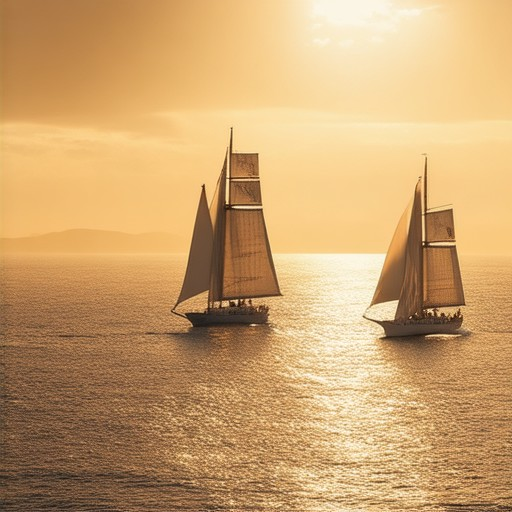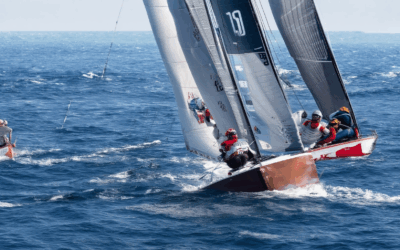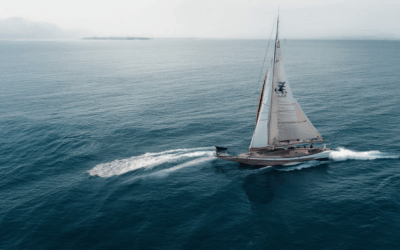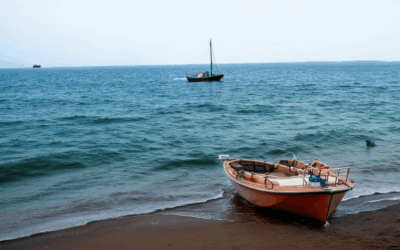Sailing and ocean photography captivate enthusiasts worldwide, offering a unique perspective on the beauty of the open sea. Whether you’re an amateur or a seasoned photographer, capturing the essence of sailing and ocean scenes requires a blend of creativity, technique, and knowledge. From the perfect angles of sailboats gliding across waves to the serene tranquility of calm waters, the challenge lies in translating these moments into stunning visuals that do justice to their magnificence. This guide delves into expert tips, equipment choices, and compositional strategies to help you master the art of sailing and ocean photography, ensuring your captures resonate with viewers and reflect the authenticity of the scenes.

What Are the Best Tips for Capturing Stunning Photos of Sailing and Ocean Scenes?
- Golden Hour Lighting: Capture vibrant colors during sunrise or sunset when the light is soft and warm, creating dramatic shadows and a unique atmosphere.
- Rule of Thirds and Leading Lines: Use the rule of thirds to frame your scene and incorporate leading lines to guide the viewer’s eye towards the horizon or key elements in the photo.
- Focus on the Subject: Whether it’s a sailboat, waves, or the sky, ensure your subject is sharp and well-defined. Use manual focusing to achieve critical focus.
- Use a Tripod: A tripod provides stability, especially in windy conditions, allowing you to adjust settings without worrying about camera movement.
- Explore Different Angles: Get low and close to the water or high above for a unique perspective. Consider shooting from the bow of the boat for an intimate view.
- Experiment with Filters: Use neutral density (ND) filters to control light exposure and create dynamic skies with long exposures. Polarizing filters can enhance color and reduce glare.
- Capture the Environment: Include elements like the boat, sails, rigging, and surrounding landscape to tell a story. Don’t just focus on the subject alone.
- Patience and Timing: Wait for the perfect moment when the light, weather, and composition align. Sometimes the best shots happen unexpectedly.
- Edit Post-Capture: Adjust colors, contrast, and perspective in post-processing software to bring out details and enhance the mood of the photo.
- Resources and Community: Explore tips and inspiration from professional photographers and communities dedicated to sailing and ocean photography, such as Sailing Photo Awards .
Top Strategies for Taking Amazing Photos of Sailing and Ocean Scenes
Taking stunning photos of sailing and ocean scenes requires a combination of technical skills, creativity, and understanding of the environment. Here are some proven strategies to capture breathtaking shots:
- Choose the Right Time of Day : The golden hour, typically one hour after sunrise or before sunset, offers soft, diffused light that enhances textures and colors in the scene. This is ideal for capturing dramatic sunsets or serene sunrises over the water.
- Utilize Natural Light and Shadows : Sunlight can create striking contrasts and highlight features of the sailboat or waves. Position yourself so that the sunlight falls across the subject, adding depth and dimension to the photo.
- Experiment with Angles and Perspectives : Capture the scene from ground level, mid-air, or a low angle to emphasize the scale and grandeur of the ocean. Aerial shots, particularly from a helicopter or drone, can reveal unique perspectives of the boat and its surroundings.
- Focus on Movement and Action : Sailboats moving through the water can create dynamic and lively compositions. Freeze-frame moments, such as the perfect wave or the peak of a sail, require a fast shutter speed to capture the motion effectively.
- Pay Attention to Composition : Use the rule of thirds, leading lines, and symmetry to frame your shot. Incorporate elements like the horizon, boats, waves, and clouds to create a balanced and visually appealing image.
- Consider the Background : The ocean can serve as a beautiful backdrop, but avoid distractions. Remove or minimize objects like land, buildings, or other boats that could draw attention away from the main subject.
- Use a Tripod for Stability : Especially in rough conditions, a tripod ensures stability and allows for precise camera movements. This is particularly useful when capturing long exposures or slow-motion shots.
- Edit Your Photos Thoughtfully : Post-processing can enhance the color, contrast, and overall mood of the photo. Adjustments like vignettes, selective coloring, and dehaze can elevate your images to stand out.
By combining these strategies with patience and a keen eye for detail, you can capture the essence of sailing and ocean scenes in a way that feels both authentic and inspiring. Remember to explore different locations, experiment with different styles, and keep shooting to refine your craft.
For more tips and inspiration, visit our Sailing Photo Awards platform to discover award-winning photographs and learn from professional photographers who specialize in marine photography.

Expert Advice for Capturing Stunning Sailing and Ocean Scenes
Photographing sailing and ocean scenes requires a combination of technical skill, creativity, and attention to detail. Here are some professional tips to help you get the most out of your photography:
- Timing is Everything : Capture your shots during the golden hours—right after sunrise and just before sunset—for soft, warm lighting that enhances the drama of the scenes. These times often yield stunning sunsets or sunrises over the water.
- Master Composition : Use leading lines to guide the viewer’s eye towards your subject, such as a boat heading towards the horizon. Consider symmetry, placing your subject centrally to balance the surroundings effectively.
- Light Management : Utilize a polarizing filter to reduce glare on the water surface. Experiment with shooting into the light to create dramatic silhouettes or backlit effects, adding depth and interest to your photos.
- Equipment Selection : Use a sturdy tripod for stability, especially when capturing moving subjects. Opt for a wide-angle lens to capture the vastness of the ocean and a telephoto lens for detailed shots of rigging or waves.
- Patience and Timing : Wait for the perfect moment when your subject aligns with the background, such as a boat positioned to complement the setting sun or a strong wave reflection.
- Adapt to Conditions : Check the weather forecast to avoid bad conditions, but don’t shy away from rough seas if they create dynamic shots with movement and wave action.
- Incorporate Sky and Horizon : Capture the full expanse of the sky and horizon to convey scale and grandeur. Use compositional rules like the rule of thirds to enhance your framing.
- Experiment with Perspective : Shoot from a low angle to emphasize the vastness of the ocean or from a high vantage point to capture unique angles, such as a boat as a small dot against the skyline.
- Edit Thoughtfully : Post-process your photos to enhance colors, adjusting blues and warm tones for visual appeal. Crop and straighten images to remove distractions, ensuring focus remains on your subject.

Key Elements for Capturing Beautiful Sailing and Ocean Photographs
Welcome to Sailing Photo Awards, where we celebrate the artistry of sailing photography. Here are the essential elements to help you capture stunning sailing and ocean photographs:
- Lighting:** Natural light is your best friend. Look for soft, diffused light during sunrise or sunset to create dramatic effects. Avoid harsh shadows and always position yourself to minimize glare.
- Composition:** Use leading lines like the mast or horizon to guide the eye. Experiment with perspectives, such as a low angle to emphasize the vastness of the ocean.
- Timing:** Capture the magic hours – golden hour and blue hour – when colors are most vibrant. Plan around tide changes and weather conditions that create dynamic scenes.
- Equipment:** Invest in a sturdy tripod for stability, especially in rough conditions. Use a high-quality camera with a wide-angle lens to capture the expanse of the ocean and sails.
- Edit with Care:** Post-processing can enhance your photos. Adjust exposure, contrast, and color to bring out details. Consider converting to black and white for a timeless look.
Ready to explore more? Visit our gallery and discover inspiring photography tips and stories. Let’s capture the essence of the open sea together!
Best Practices for Capturing Stunning Photos of Sailing and Ocean Scenes
Capturing stunning photos of sailing and ocean scenes requires a combination of technical skill, creativity, and attention to detail. Here are some expert tips to help you get the most out of your photography:
- Lighting is Key : The golden hours (sunset and sunrise) often provide soft, warm lighting that enhances the ocean’s colors. Try to shoot during these times for a dramatic effect.
- Composition Matters : Use leading lines, triangles, and symmetry to frame your shots. A well-composed photo can make the scene more visually appealing and dynamic.
- Patience is Your Friend : Wait for the perfect moment when the light, boat position, and waves align. This can make the difference between an average shot and a memorable one.
- Use a Tripod for Stability : The gentle motion of the boat can cause blurriness. A tripod ensures stability and keeps your camera steady, even in rough conditions.
- Manual Focusing is Essential : Since subjects can be distant, manually focusing helps ensure everything in the foreground and background is sharp.
- Enhance Colors and Contrast : Adjust your white balance to bring out the ocean’s blue and green tones. Look for complementary colors in the scene to add vibrancy.
- Include Details to Add Interest : Capture details like the boat’s rigging, wave patterns, or the horizon to add depth and story to your photos.
- Consider Weather Conditions : Good weather with calm seas is ideal, but don’t shy away from stormy skies if they add drama and mood to your shots.
- Post-Processing Enhances Quality : Use editing software to adjust exposure, color, and perspective. Tools like Adobe Lightroom or GIMP can help refine your photos.
- Study Examples for Inspiration : Look at professional portfolios and tutorials to learn from experts. Practice and experiment with different styles to find your unique approach.
- Explore Unique Angles : Shoot from the deck, or try aerial views using drones (where permitted) to capture fresh perspectives of the boat and surroundings.
- Time Your Shots Wisely : Consider shooting at high tide for dramatic waves or low tide to reveal hidden textures in the seabed, adding depth to your photos.
By following these tips, you can create stunning photos that capture the essence of sailing and the ocean’s beauty. Remember to stay patient, observant, and open to experimenting with different techniques to achieve your best work.

What Are the Best Tips for Capturing Stunning Photos of Sailing and Ocean Scenes?
- Choose the Right Time of Day: Capture the magic of sailing during golden hour or blue hours. These times offer soft, diffused light that enhances colors and creates dramatic silhouettes. Look for moments like a sunset sail or a dramatic wave pattern.
- Utilize a Polarizing Filter: Add depth and reduce glare by using a polarizing filter. This helps in getting clearer skies and more vibrant ocean colors, especially during sunny days.
- Experiment with Neutral Density (ND) Filters: These filters allow you to control the amount of light entering your lens, enabling you to create long exposure shots of waves and boats moving smoothly. Use this effect to add movement and dynamism to your scenes.
- Focus on Composition: Frame your shots thoughtfully. Consider leading lines, rule of thirds, and symmetry to create visually appealing compositions. A well-composed photo often makes the subject stand out more.
- Capture Reflections and Silhouettes: Reflections off the water can add a magical touch. Similarly, silhouettes of boats or sails against the setting sun create striking images. Pay attention to the reflection of the sky and clouds on the water surface.
- Stay Low to the Ground: Get closer to the water level to emphasize the vastness of the ocean. This perspective often leads to more impactful and dramatic shots, especially when capturing waves and boat movements.
- Consider the Weather Conditions: Plan your shoots around weather forecasts. Stormy conditions can create dramatic skies and rough waves, which may add intensity to your photos. Always check the forecast before heading out.
- Use a Tripod for Stability: Especially in windy conditions, a tripod ensures stability and keeps your camera steady. This is particularly useful when using slow shutter speeds for long exposures.
- Explore Different Angles and Perspectives: Don’t stick to shooting from the deck. Climb the mast, position yourself at the bow, or shoot from a nearby vantage point to get unique perspectives. Sometimes, a bird’s-eye view or a low-angle shot can make all the difference.
- Post-Processing Enhancements: Use editing software to adjust colors, contrast, and tones. Techniques like HDR (High Dynamic Range) can help blend bright skies with dark ocean depths. Fine-tune your photos to bring out details and enhance the overall mood of the scene.
Ready to take your sailing and ocean photography to the next level? Explore Sailing Photo Awards for inspiration, tips, and galleries that showcase the best of nautical photography.



0 Comments